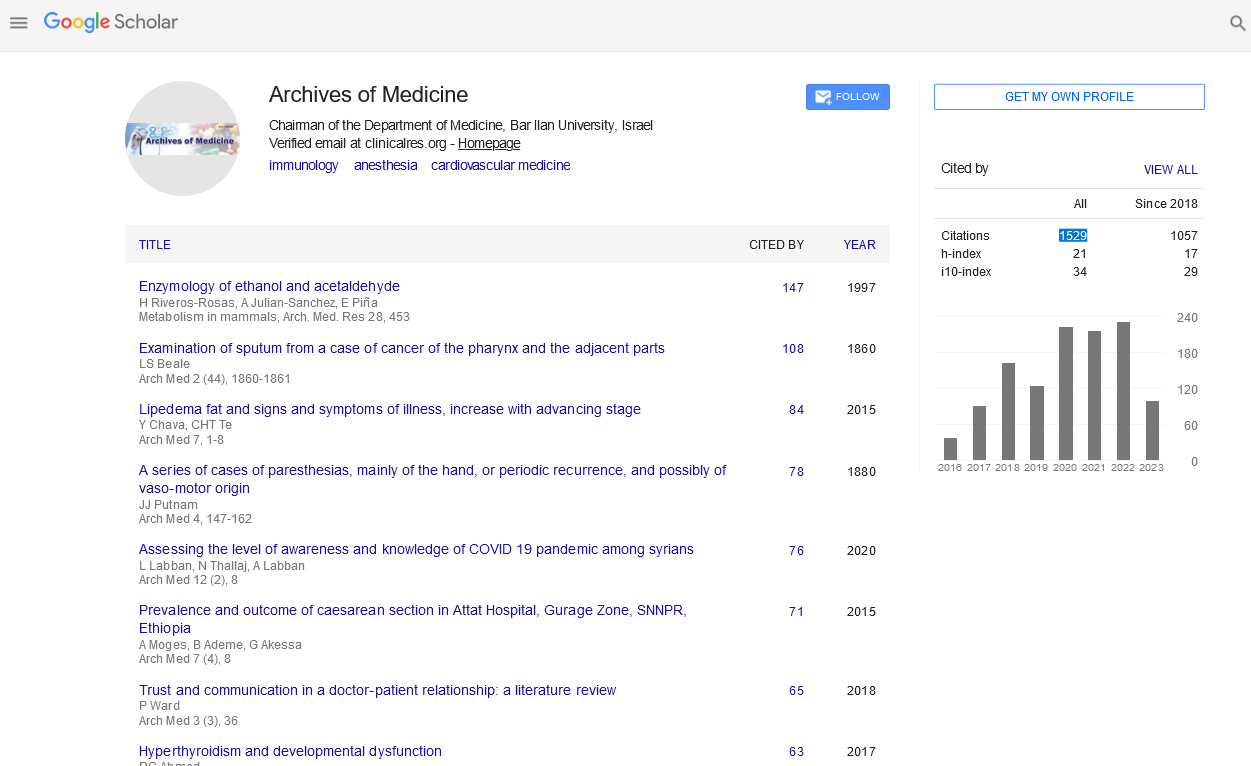Short Communication - (2022) Volume 14, Issue 7
Health situation of black and poor women facing COVID-19: Victims of Inequalities
Pascal David*
Division of Pediatric Neurology, School of Medicine, Indiana University, Indianapolis, Indiana
*Correspondence:
Pascal David, Division of Pediatric Neurology, School of Medicine, Indiana University,
Indianapolis,
Indiana,
Email:
Received: 25-Jun-2022, Manuscript No. ipaom-22-12982;
Editor assigned: 28-Jun-2022, Pre QC No. P-12982;
Reviewed: 17-Jul-2022, QC No. Q-12982;
Revised: 22-Jul-2022, Manuscript No. R-12982;
Published:
30-Jul-2022
Abstract
A woman dies every seven hours in Brazil victim of feminicide.
Maternal mortality of black women due to COVID-19, the new
coronavirus, is almost twice as high as that of white women. Studies
were identified using large-circulation international journals found in
two electronic databases: Scopus and Embase. This idea of the black
and poor woman as disposable or unnecessary has an enormous
race influency. In this context, the burden that the pandemic
can cause to the country's health system may further expose the
structural racism that goes through health care. Maternal mortality
of black women due to COVID-19, the new coronavirus, is almost
twice as high as that of white women. Thus, the concentration of
efforts to approach COVID-19 in medical-centred care measures
decontextualized, not only in relation to people's way of living and
getting sick, but also, with other knowledge, also corroborate the
high incidence and lethality rates of COVID-19.
Keywords
Communicable disease; Mouth; Nose; Eyes
Introduction
The Covid-19 is pedagogical pandemic. However, the
pedagogy is appalling: according to the World Health
Organization, every month hundreds of thousands of
women seek for health services to take care of incomplete
abortions. In Argentina, it is estimated that there are
3.330 women in this situation; 1.522 in Chile; 7.778 in
Colombia and 18.285 in Mexico. For each woman who is
admitted at a hospital for an incomplete abortion, the same
individual may use the services twice: first, for abortion
care and second, for the risk of COVID-19 infection There
is a global presumption that exist a house in which peoplewho
have bodies, who have genders, class and race- can be
in social distancing.
About the Study
Agreeing with Deborah Diniz we all need to be looked
after. This role, in the overwhelming majority of cases, is
played by women, and this task distribution is uneven.
Diniz hopes a post pandemic COVID-19 world in which
feminist values could be part of our common vocabulary.
When speaking about women, we regard those who walk
for hours to get attention in reproductive health clinics to
access contraceptive methods, because they do not want to
become pregnant in the middle of a crisis; we are speaking
about women helping other women to seek protection,
away from their aggressor partners, at the same time that
violence grows in times of social isolation. More than half
of the Brazilian population is made up of women. Black
indigenous, white, in rural areas or in cities. Even with
the government disregard, reality jumps into the eyes and
shows faces and skin tones For Débora Diniz poor women,
who are mostly black, have no way to escape the contagion.
Besides that, they will face unemployment, if not death,
and an immersion in the risk of a very large contamination.
Classification
Cerebral palsy is classified based on how it affects
people's movement, the body portion affected, and the
severity of the effects. Ataxic cerebral palsy: Clumsiness,
imprecision, and instability are all characteristics of ataxic
movements. The movements are not smooth and may
appear choppy or dis organized. When a person with ataxia
tries to make voluntary motions like walking or picking
up objects, they experience incoordination. Ataxia is
characterized by a loss of muscle control in the arms and
legs, which leads to a loss of balance and coordination.
Ataxia patients may have the following
symptoms:
Tremor or unsteady, wobbly movements: Maintaining
equilibrium is difficult. Because their sense of balance and
depth perception are compromised, people with ataxia
appear unsteady and shaky. Dyskinetic cerebral palsy:
People with dyskinetic cerebral palsy exhibit involuntary
movement that is varied (outside of their control). When
a person tries to walk, these involuntary motions become
more obvious.
Dyskinetic motions can include the following:
Dystonia is a condition that causes twisting and
repetitive movements. Athetosis is a term for slow, 'stormy'
movements. Chorea is a dance-like movement that is
irregular and unpredictable. Spastic cerebral palsy: The
most prevalent type of cerebral palsy is plastic cerebral
palsy. People with spastic cerebral palsy have tight muscles,
and their motions may appear stiff and jerky. Hypertonia,
or increased muscular tone, is a type of spasticity. As a
result, muscles become rigid, making movement difficult,
if not impossible [1-5].
Conclusion
The restrictions imposed by the pandemic have
increased the barriers to access clandestine abortion by poor
women. The spaces of death- clandestine abortion onesmade
some bodies bleed, while other individuals protect themselves from the pandemic far from the threat of the
virus or criminal law. Numbers are outrageous and they
also distance people from the reality, since in statistics the
stories of these women are covert. Every maternal death is
preventable, if access to the health service were appropriate.
But maternal deaths never present itself alone in a public
health emergency. The Brazilian rate is four dead women
for every 100 thousand women, 74% higher than the
world average. In addition, a woman dies every seven hours
in Brazil victim of feminicide. They are women who, if they
challenge the rules of domestic reclusion and submit to the
servitude of work, they may fall ill as caregivers of those
who ignore their rights, their life or their name.
Conflicts of Interest
The author declares no competing interests.
Author declares that the material has not been published
elsewhere, or has not been submitted to another publisher.
Data Availability
Author declares that all related data are available
concerning researchers by the corresponding author's
email.
Acknowledgments
The views presented in this paper are of the authors and
not of the organizations they represent.
REFERENCES
- Lameire N, Van Biesen W, Vanholder R. Acute renal failure. Lancet. 2005;365:417-430.
Crossref, Google Scholar, Indexed at
- Spital A, Valvo JR, Segal AJ. Nondilated obstructive uropathy. Urol. 1988;3:478-482.
Crossref, Google Scholar
- Onuigbo MAC. Symptomatic uremia from bilateral obstructive uropathy secondary to metastatic urinary bladder cancer showing only unilateral hydronephrosis: A case report. NDT Plus. 2009;2:387-389.
Crossref, Google Scholar, Indexed at
- Naidich JB, Rackson ME, Mossey RT, et al. Nondilated obstructive uropathy: Percutaneous nephrostomy performed to reverse renal failure. Radiol. 1986;160:653-657.
Crossref, Google Scholar, Indexed at
- Lyons K, Matthews P, Evans C. Obstructive uropathy without dilatation: A potential diagnostic pitfall. Br Med J. 1988;296:1517-1518.
Crossref, Google Scholar, Indexed at






